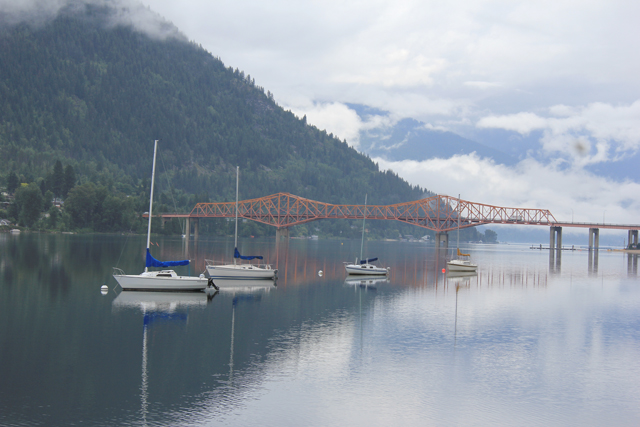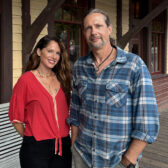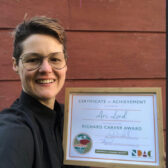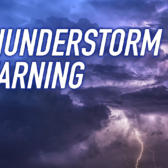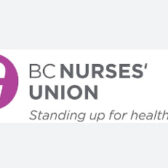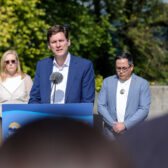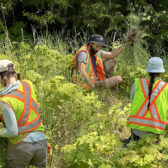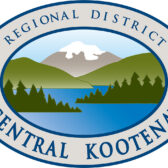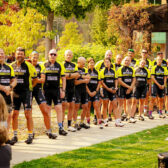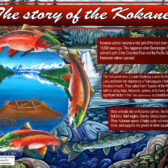Nelson (population 10,664) is a city located in the Selkirk Mountains on the extreme west arm of Kootenay Lake in the Southern Interior of British Columbia, Canada. Known as “The Queen City” and acknowledged for its impressive collection of restored heritage buildings from its glory days in a regional silver rush, Nelson is one of the three cities forming the commercial and population core of the West Kootenay region, the others being Castlegar and Trail. The city is the seat of the Regional District of Central Kootenay and is represented in the provincial legislature by the riding of Nelson-Creston and in the Parliament of Canada by the riding of British Columbia Southern Interior. Highway 3A passes through Nelson, while scheduled commercial airline service is available at the Castlegar Airport, approximately 43 kilometres south-west of the city.
History of the Region
The West Kootenay region of British Columbia, where the city of Nelson is situated, is part of the traditional territories of the Sinixt (or Lakes) and Ktunaxa (Kutenai) peoples.
Gold and silver were found in the area in 1867. Following the discovery of silver at nearby Toad Mountain in 1886, the town boomed quickly, leading to incorporation in 1897. Two railways were built to pass through Nelson. Due to its location near transportation corridors, Nelson grew to supply the local mining activity and soon became a transportation and distribution centre for the region.
The town soon matured from a false-fronted boom town to a sophisticated city. Francis Rattenbury, a noted architect, designed chateau-style civic buildings made of granite, which stand today; the quality of Rattenbury’s work is suggested by the fact that he had previously designed the B.C. Legislature building in Victoria. By the 1900s, Nelson boasted several fine hotels, a Hudson’s Bay Company store and an electric streetcar system. The local forestry and mining industries were well established.
The town built its own hydroelectric generating system in 1910. English immigrants planted lakeside orchards, and Doukhobors from Russia, sponsored by Tolstoy and the Quakers, tilled the valley benchlands. The Doukhobor museum is located nearby, close to the neighbor town of Castlegar.
During the Vietnam War, many American draft dodgers settled in Nelson and the surrounding area. This influx of liberal, mostly educated young people had a significant impact on the area’s cultural and political demographics. More recently, servicemen deserting from America’s war with Iraq have found their way to Nelson.[citation needed]
It was during the Vietnam War that Notre Dame University of Nelson, a four-year degree granting institution, flourished. NDU awarded Bachelor’s Degrees in a wide variety of subjects and employed some of Canada’s most prestigious professors, including Dr. L.A.D. Morey, a distinguished Medievalist and former student of J.R.R. Tolkien at Oxford, as well as Dr. J.P. Micallef, Professor of Philosophy and nephew of the Prime Minister of Malta. This relatively small university, enrolling 2,000 students at its height, was also home to the Canadian National Ski Team and innovated a new approach to financing and building its own Student Union Building. Cooperative arrangements with the Kootenay School of the Arts were established. Later, the B.C. Provincial Legislature authorized NDU’s transformation into David Thompson University and, ultimately, this school’s campus became a Private Language School serving mainly Japanese students.
Nelson’s mountainous geography kept growth stunted into the narrow valley bottom, except for certain hillside structures such as the local High School and the former NDU campus. Throughout the ’60s and ’70s when more prosperous cities were tearing down and rebuilding their downtowns to the design of the time, Nelson merchants ‘modernized’ their buildings with covers of aluminum siding.
In the early 1980s, Nelson suffered a devastating economic downturn when the local Kootenay Forest Products sawmill was closed. Downtown merchants were already suffering from the opening of a large, regional shopping centre on Nelson’s central waterfront, the Chahko Mika Mall. At the time, Victoria and Vancouver were experimenting with historical restorations of their oldest areas, with great success. To save downtown and Baker Street from blight, Nelson quickly followed suit, stripping aluminum facades and restoring the buildings to their original brilliance. Local designer Bob Inwood, one of Nelson’s many American immigrants, played a major role as a consultant. By 1985, Baker Street was completely transformed. Affirmation of the street’s success came in 1987 when Steve Martin chose to produce his feature film Roxanne almost exclusively in Nelson, using the local fire hall as a primary set and many historic locations for others. More broadly, the transformation marked the beginning of Nelson’s ongoing transition from a resource-based town to an arts and tourism town.
Nelson Today
Today, Nelson has earned a reputation as a cultural centre. The term hippie is used most often. The downtown area is packed with good restaurants, cafes, coffee houses, local shops, small art galleries, the restored Capitol Theatre and impromptu theatre venues. The primary industry is tourism, and the city is about forty-five minutes away from the site of the annual Shambhala Music Festival, an internationally known artistic music festival held in August at the Salmo River Ranch. It is also home to Whitewater Ski Resort and the Nelson Brewing Company, a regional microbrewery, and the restored Capitol Theatre, a regional hub for the performing arts.
As with many communities in British Columbia, Nelson has experienced a real estate boom. Over the last few years, real estate prices have skyrocketed, putting ownership out of reach for less affluent residents. The city’s economy is growing, and some residents have expressed dissatisfaction with the resultant changes. Nelsonites are proud of their community’s unique, small town feel, which has remained relatively free of the chain stores, franchises and strip-mall developments that are common in other towns of similar size. Despite this, there are a few US mega-retailers operating in the city, including a Wal-Mart and Starbucks However, Nelson does not have a McDonald’s, but does have A&W, KFC and Subway. There has been a push for residents to buy from local businesses as opposed to supporting large corporations.
Nelson is also a well-known alternative lifestyles hot spot. Hemp clothes and cannabis-related products are sold in local stores, and in July 2006, an owner of one of these stores was arrested on allegations of trafficking in cannabis.[1]
Nelson is home to the studios of Kootenay Co-op Radio, a cooperative community radio station started by local volunteers.
Activities in Nelson
Cultural activities abound in Nelson. Set in the natural beauty of the Selkirks, many artists and writers make Nelson their home. Nelson is highlighted as the “Number One Small Town Arts Community in Canada” by the publisher of The 100 Best Small Arts Towns in America, and is home to a large and diverse artisan community. Artwalk features local talent. July, August and September mark three months of exhibitions throughout the downtown core in variety of galleries and local businesses. Each month has a separate grand opening, usually the first Friday evening of the month, which includes refreshments, musicians and artwork for locals and visitors to enjoy as they stroll through downtown Nelson. Nelson also has regular farmer’s markets where local artisans can be found selling a unique and diverse variety of arts, crafts and imports.
Two popular hiking trails are the Nelson-Salmo Great Northern Trail, a very gently sloped rail trail which runs across Nelson and allows biking; and the Pulpit Rock Trail, which offers a short, but somewhat challenging hike that ends in a beautiful view of the city. After Pulpit Rock the trail continues up the spine of Elephant Mountain (as the locals call it) to more postcard views, and eventually to the radio towers visible from everywhere in the city. Hikers venturing beyond Pulpit Rock should have basic wilderness gear and exercise common sense. Public access to the Pulpit Rock trail has been restored with the opening in the spring of 2009 of a new access point several hundred metres west of the old trail head, which was on private land.
In the winter, skiing is Nelson’s primary outdoor activity. 30 minutes south of town is the Whitewater Ski Resort, which provides access, via two double chairlifts and a handle tow, to 396 vertical metres of beginner to advanced terrain. The resort also provides access to hundreds of kilometres of off-piste skiing and back country touring. The Nelson area is home to over 20 cat-skiing, heli-skiing and ski-touring operators and hundreds of kilometres of cross-country trails are available for the Nordic skier.
Mountain biking is part of the local culture, and Nelson offers a wide variety of MTB-oriented trails for all levels of experience. Excellent trail maps are available at local bike shops.
Rock climbing is also a popular summer activity. Kootenay Crag, Hall Siding, Grohman Narrows and CIC Bluffs are popular city crags. Slocan Bluffs and Kinnaird are in nearby Slocan City and Castlegar. 2003 saw bouldering take off in Nelson with extensive new development of bouldering areas in Grohman Narrows and nearby Robson. Mountaineers and alpine rock climbers head to the Valhalla Provincial Park in the Selkirk Mountains for long alpine routes on unique textured granite. The Mulvey Basin, Cougar Creek and Nemo Creek areas have routes ranging in grade from 5.4 to 5.12.
A walk down Historic Baker Street is a must for visitors, and a heritage streetcar, Streetcar 23, runs along the lake front, through the middle of the Chahko Mika Mall carpark. Maps for downtown and residential walking tours are available at the local Chamber of Commerce.
Nelson is also located close to Kokanee Glacier Provincial Park.
On January 13, 2007 Nelson was the broadcast location for the annual Hockey Day in Canada.

